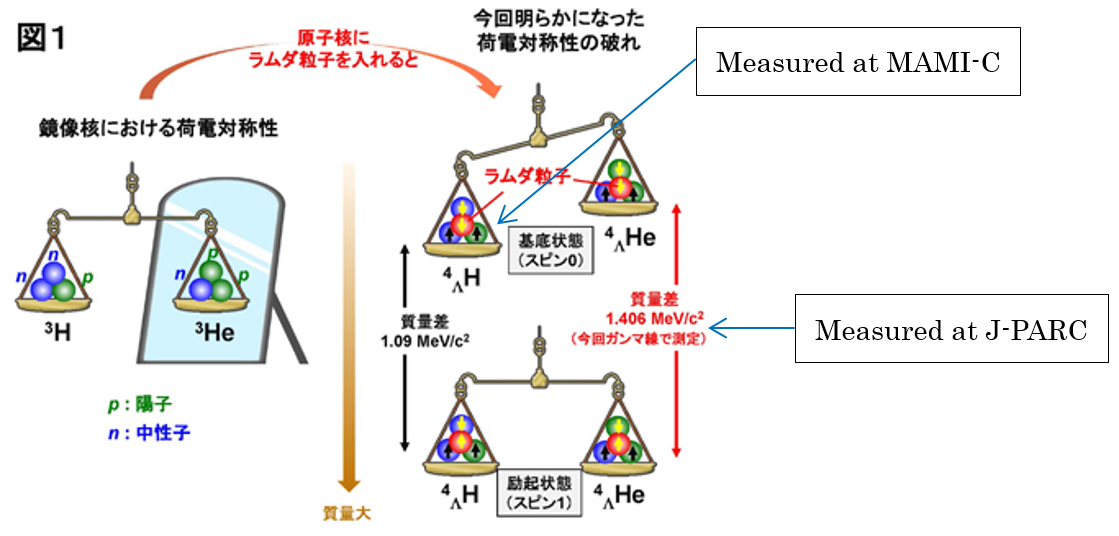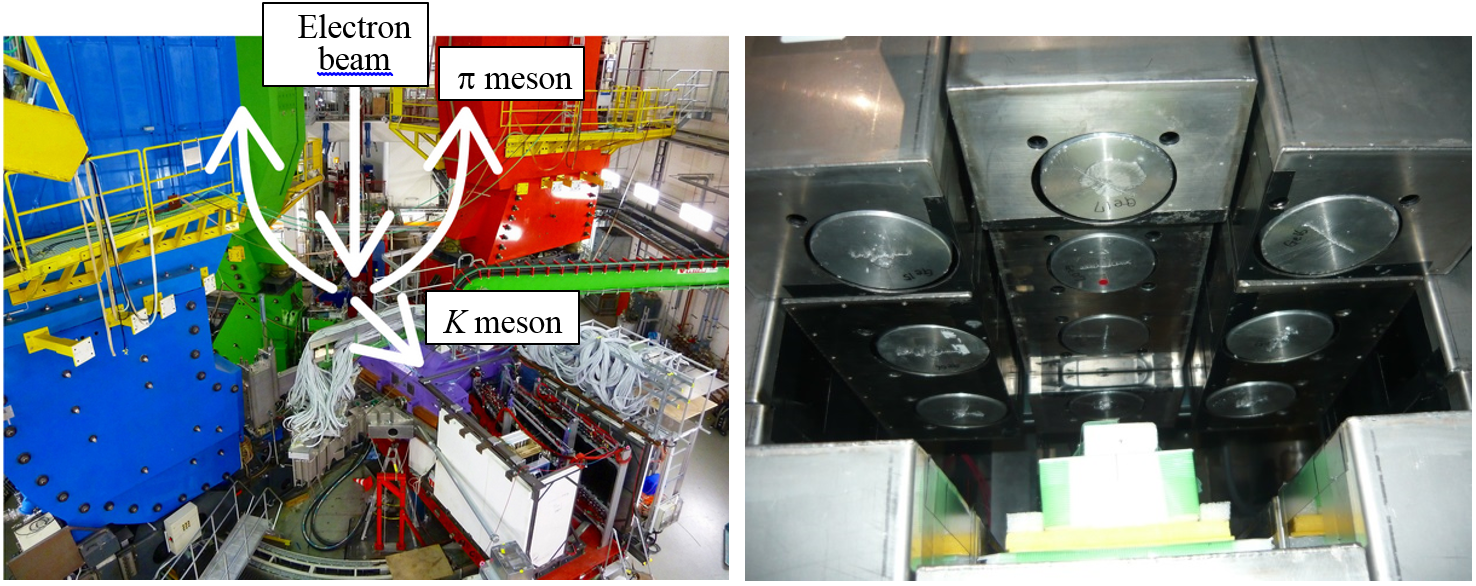Topics
2016.7.25
“Strange particle” breaks down the Charge Symmetry in atomic nuclei
Nuclear Physics Lab. (Strangeness group)
The nuclear force which binds up protons and neutrons in a nucleus originates from the strong interaction between quarks. Though Dr. Yukawa’s meson exchange theory successfully explained important characters of the nuclear force, it is not enough to understand all nature of the nuclear force. Complete understanding of the nuclear force is one of the key issues in nuclear physics.
We can deepen our understanding of the nuclear force (baryonic force) by putting a strange quark which does not exist in normal nuclei. The Nuclear Physics Lab. of Tohoku University is a top runner in the study of Λ hypernuclei, atomic nuclei containing s Λ particle, the lightest baryon (family of proton and neutron) with a strange quark.
A proton with electric charge and a neutron without charge are totally different for the electro-magnetic interaction; however, the nuclear forces between proton-proton and neutron-neutron are almost the same. Therefore, “mirror nuclei” (a pair of nuclei with the swapped numbers of protons and neutrons, see Fig. 1 left) have almost the same mass and properties. This is one of the most important natures of the nuclear force and called “Charge Symmetry”.
Our recent research clarified that the charge symmetry is broken by adding a Λ particle into nuclei. Figure 1 (right) shows that 4ΛH hypernucleus (made of one proton, two neutrons and a Λ particle) and 4ΛHe hypernucleus (made of two protons, one neutron and a Λ particle) are mirror nuclei and their masses and structures are expected to be the same by the charge symmetry. However, old experiments reported that difference between their ground state energies is much larger than the value expected from the electro-magnetic interaction. It suggests that a Λ breaks charge symmetry between proton and neutron largely, which, however, no theory can explain. Therefore, state-of-arts experiments are awaited to clarify whether the charge symmetry is really broken forΛ-nuclear systems
The lifetime of a Λ hypernucleus is only about 2 per 10 billion second and they cannot exist naturally on the earth. Therefore, high-energy particle accelerators are used to produce them artificially. An international collaboration team led by the Nuclear Physics Lab. of Tohoku University measured the mass of the 4ΛH ground state precisely at MAMI-C accelerator facility (Mainz Univ. Germany) by using a novel experimental technique, the decay pion spectroscopy of electro-produced hypernuclei. We also successfully measured the excitation energy of 4ΛHe 1+ excited state very precisely at J-PARC accelerator complex (Tokai, Japan).
These studies clarified that there exists a large difference between the Λ binding energies of 4ΛH and 4ΛHe ground states (spin 0) but almost no difference between the Λ binding energies of 4ΛH and 4ΛHe excited states (spin 1). This expected result is a great step to further understanding of the baryonic force including the nuclear force. We plan to extend our research to measure precise binding energies of excited state of 4ΛH and heavier hypernuclei.
 Fig. 1 Charge symmetry breaking between 4ΛH and 4ΛHe hypernuclei. |
 Fig. 2 The setups used for study of hypernuclei. Left: Magnetic spectrometers, Kaos, Spek-A and C. Right: Hyperball-J, a gamma-ray detector array dedicated to study of hypernuclei. |
Please read following pages to know more detail of our research:
Mass measurement of 4ΛH at MAMI-C accelerator, Mainz University.
http://www.sci.tohoku.ac.jp/english/news/20150625-3563.html
A. Esser, S. Nagao et al., Phys. Rev. Lett. 144, 232501 (2015).
Precise measurement of excitation energy of 4ΛHe(1+) at J-PARC, Tokai.
http://www.tohoku.ac.jp/japanese/2015/11/press20151125-02.html
T. O. Yamamoto et al., Phys. Rev. Lett. 115, 222501 (2015).

